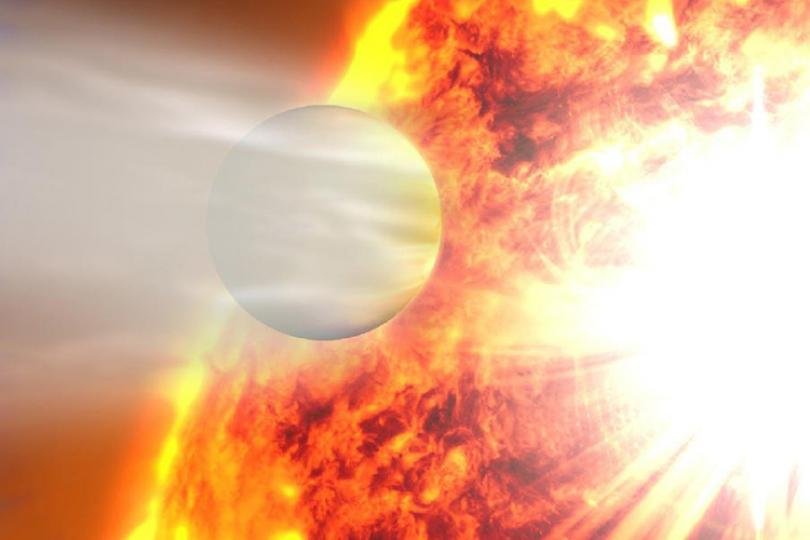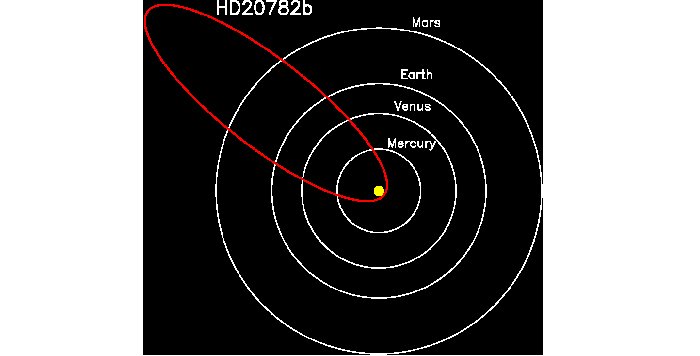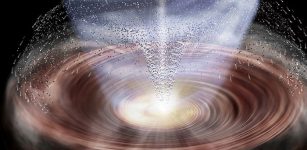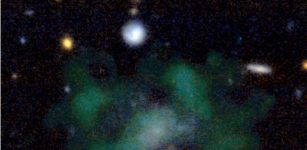HD 20782: A Highly ‘Eccentric’ Planet About 117 Light-Years From Earth – Observed
MessageToEagle.com – Astronomers have observed an extrasolar planet about 117 light-years from earth that boasts the most eccentric orbit yet seen.
A team led by San Francisco State University astronomer Stephen Kane, detected a signal of reflected light from the planet known as HD 20782 — a “flash” of starlight bouncing off the eccentric planet’s atmosphere as it made its closest orbital approach to its star.
“The reflected light could tell researchers more about how the atmosphere of a planet like HD 20782 responds when it spends most of its time far away from its star, “but then has a very close approach where it’s flash-heated by the star,” Kane said in a press release.

While the planets in our solar system have nearly circular orbits, astronomers have discovered several extrasolar planets with highly elliptical or eccentric orbits and earlier observations of HD 20782 suggested that the planet might have an extremely eccentric orbit.
HD 20782 has the most eccentric orbit known, measured at an eccentricity of .96. This means that the planet moves in a nearly flattened ellipse, traveling a long path far from its star and then making a fast and furious slingshot around the star at its closest approach.
“At the furthest point in its orbit, the planet is separated from its star by 2.5 times the distance between the sun and Earth. At its closest approach, it ventures as close as .06 of that same Earth-sun distance — much closer than Mercury orbits the sun, said Kane, an assistant professor of physics and astronomy.
“It’s around the mass of Jupiter, but it’s swinging around its star like it’s a comet.”

The latest observation suggests that HD 20782 may be cloaked under a highly reflective cloud cover, much like Jupiter.
“The atmosphere of the planet [HD 20782] doesn’t have a chance to respond,” Kane said. “The time it takes to swing around the star is so quick that there isn’t time to remove all the icy materials that make the atmosphere so reflective.”
Astronomers can’t determine the exact makeup of HD 20782’s atmosphere yet, but this newest observation does suggest that it might have an atmosphere with Jupiter-like, highly reflective cloud cover.
“When we see a planet like this that is in an eccentric orbit, it can be really hard to try and explain how it got that way,” Kane explained.
“It’s kind of like looking at a murder scene, like those people who examine blood spatter patterns on the walls. You know something bad has happened, but you need to figure out what it was that caused it.”
The discovery was announced in The Astrophysical Journal.
MessageToEagle.com
Expand for referencesReferences:










